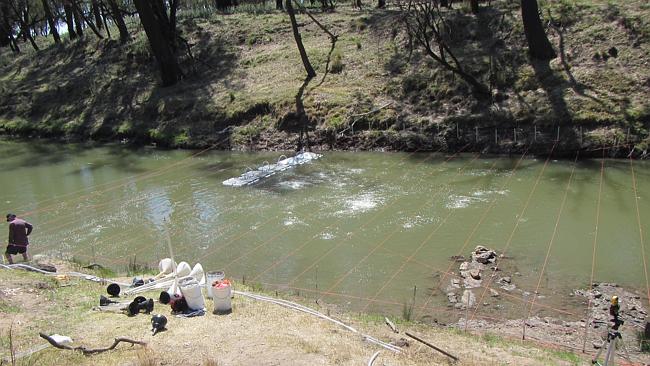
After two years and a "considerable sum'' invested, coal seam gas company Origin has released a scientific report that has four theories but still cannot quite pin down the mystery.
CSG could not be scientifically ruled out by the study but is just one of the myriad factors raised that could be contributing.
The bubbling occurs along a 5km stretch of the river, near Chinchilla, where coal seam gas is plentiful, but the source has always been a mystery and an issue of local debate ranging from rotting vegetation to CSG fracking.
Local folklore tells of at least one of the seeps that may have been occurring for decades while others were spotted by farmers soon after heavy flooding subsided in February 2012.
The Newman Government has also investigated and found there was no risk to human health and would only say it was consistent with naturally occurring events but investigations by The Courier-Mail later turned up Government documents which said that the gas creating the bubbles was "consistent with published values of coal seam gas", but a definitive link could not be made.
Without an answer the CSG industry has had difficulty fending off claims from activists that its activities were the cause.
According to the Norwest report the bubbles could be from the recharge of aquifers from floods or the depressurisation either naturally or because of CSG wells or uncapped bores.
There was also the possibility that the gas is escaping natural pathways like fractures, faults and springs.
Origin group manager of exploration, development and appraisal Ross Evans said he couldn't speculate on whether an answer would be found, but the company would keep looking.
"It's complex geology and gas has been naturally occurring in the shallow strata for some time,'' Mr Evans said.
"The important thing is to put the monitoring in place.''
The report from environmental consultants Norwest found that a combination of mechanisms and pathways may play a role in the generation, migration and discharge of gas to the surface at the seep sites.



Reader Comments
to our Newsletter